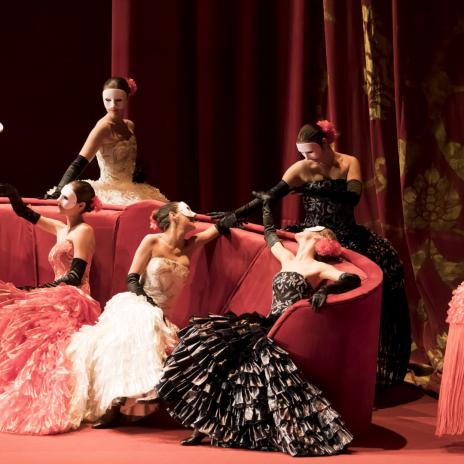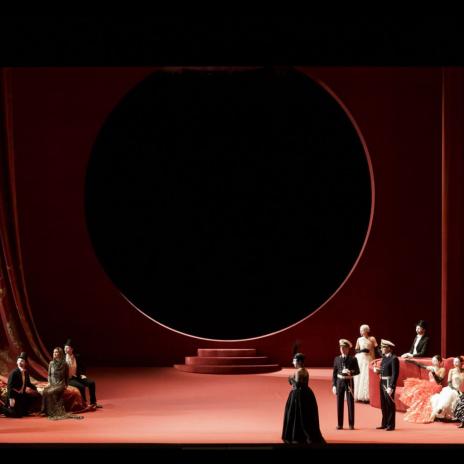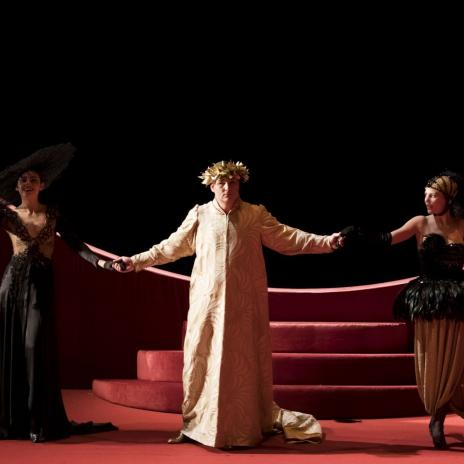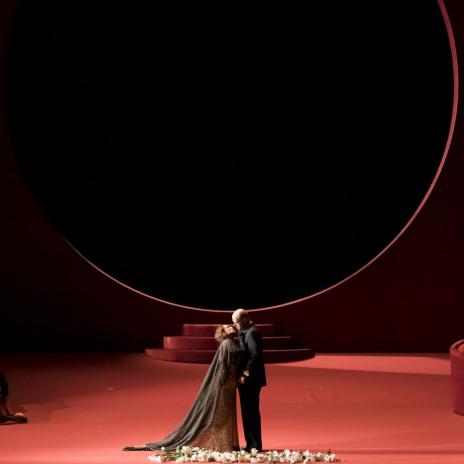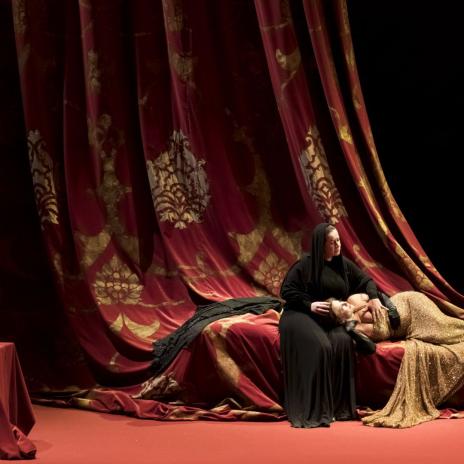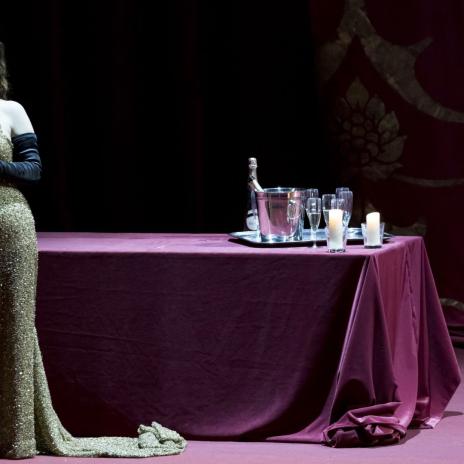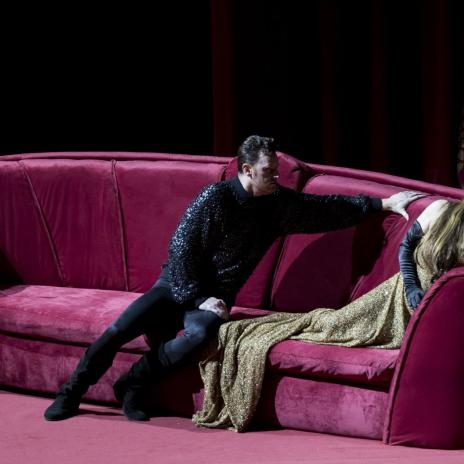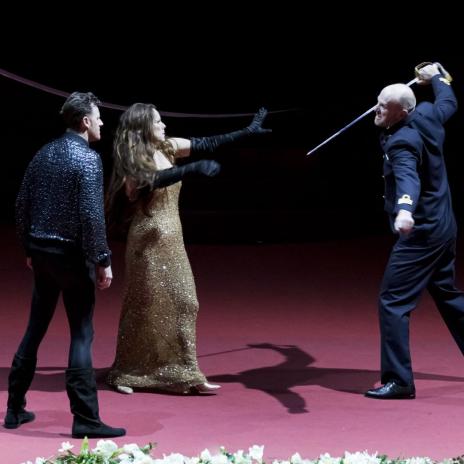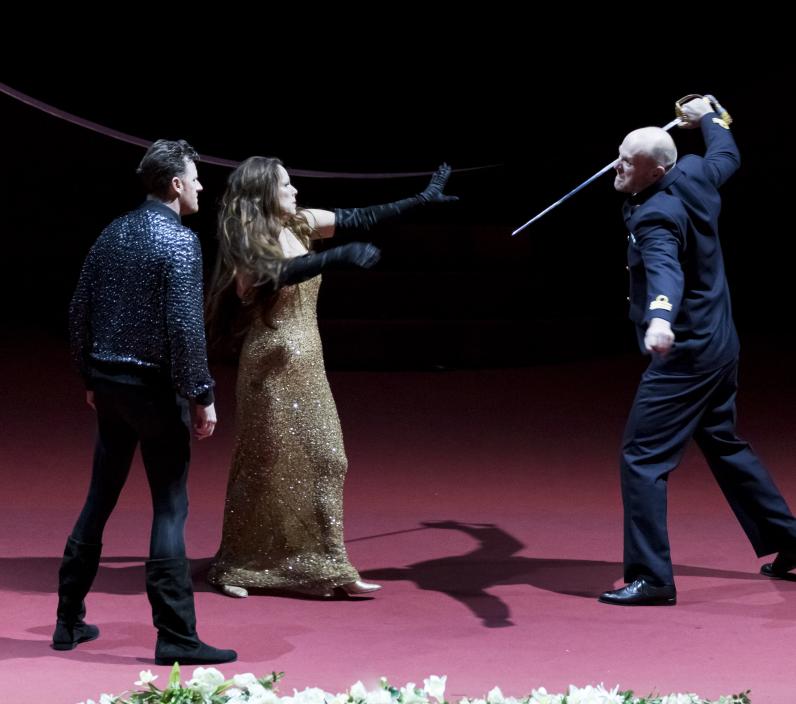

Death and the young man
The Viennese wunderkind Erich Wolfgang Korngold composed his one-act opera Violanta before his world-wide success Die tote Stadt. Hailed as ‘the greatest hope of modern German music’ by the Italian composer Giacomo Puccini and dubbed a ‘musical genius’ by none other than Gustav Mahler, who recommended that he should study with Alexander von Zemlinsky, Korngold was set for success early on. Composed at the age of 17, Korngold’s borrowing from great predecessors such as Verdi and Wagner and contemporaries such as Strauss and his teacher Zemlinksy cannot be denied. And yet, Violanta is never imitative.
This opera can be counted among the ‘last late-romantic masterpieces of the genre’, frenetically pulling out all the stops.
Violanta premiered as a tragic counterpart to Korngold’s first comedic opera The Ring of Polykrates in Munich in 1916, conducted by Bruno Walter. Over one hundred years after its premiere, the piece is now being rediscovered in the course of an international Korngold renaissance and staged for the very first time in Italy at Teatro Regio Torino. One cannot miss the irony that this work of youth is staged and conducted by two undisputed doyens of their trade: the renowned opera director Pier Luigi Pizzi and the equally acclaimed conductor Pinchas Steinberg.
All in all, the production exudes maturity and ripeness, almost decay. The decadent setting – a Venetian carnival – only strengthens that impression. Originally set in the Renaissance, Pizzi moved the action to the 1920s, when the work was composed. Critics unanimously applaud the transposition of ‘this sinister story of Eros and Thanatos into Jugendstil fashion that seems inspired by the Teatro Regio itself.’ (Corriere della Sera)
The action is located in a sumptuous crimson interior, which conveys the bottled-up passions of the characters. Indeed, Pizzi does not yield to the temptation of drawing a folkloristic tableau. The Renaissance man, who also designed the set and the costumes, interprets the scenery metaphysically. As the Neue Zürcher Zeitung points out: ‘On the completely red stage, framed by solid, heavy curtains, a black circle draws the eye into the depths, behind which a gondola, like a mortuary bark, carries Alfonso and the other carnivalesque figures into Violanta's house.’ The ‘enormous bay window, where the silver waters of the lagoon are reflected by an ink-black night, an omen of death’ (Crescendo magazine) is the staging’s pivotal point, from where eccentric characters might appear like specters from a distant world. While the carnival is in full swing, the staging focuses on the drama of the three characters enclosed in the symbolic circle.
The music participates in creating an atmosphere of menace and temptation. Pinchas Steinberg ‘exalts the most modern, Straussian features of Korngold's writing from the sick chromatic sumptuousness of the most dramatic and lyrical moments to a chamber-style full of ghostly chills’ (GB Opera Magazine).
Korngold and Steinberg fully manage to convey the authentically Venetian character, that mixture of wonder and repulsion, a decaying corpse covered in purple and gold, is the most authentic reason for charm.
Violanta can be seen as an opera of erotic alienation. Violanta’s attitudes tread the fine line between reason and psychosis. One can discern Freudian undertones in the entangled drives and repressions that animate the protagonist. After all, Freud was a key figure in the Viennese Jewish sociocultural environment that influenced Korngold.
Where the supposedly chaste Violanta is looking for voluptuous lust, the lust-tested Alfonso is looking for unconditional love. When their voices softly interlace in a duet at the end of the opera, the inspiration of Wagner’s Tristan and Isolde can be sensed in the blend of exhausted love and ecstatic longing for death. How could Korngold have had such insight at so young an age? Does art imitate life, or is it a foray into our psyche?

